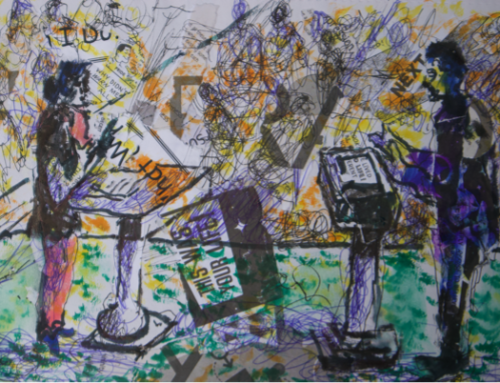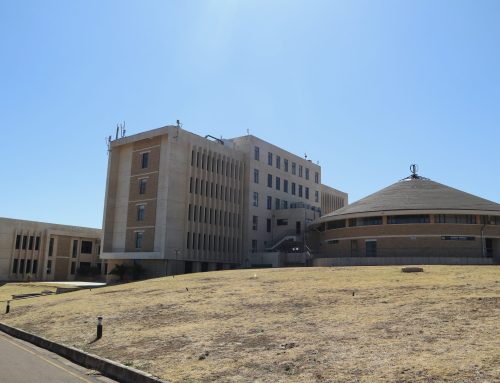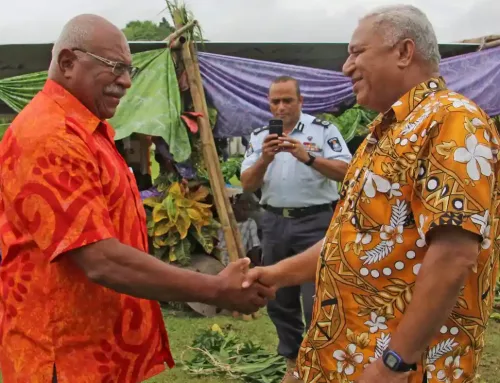by Jayaseelan Raj, King’s College London
India is often hailed as the ‘largest democracy’ in the world. Despite many criticisms, much of the discussion has been on resilient nature of Indian democracy and on how it has survived (Varshney 1998) despite the huge diversity, poverty, and inequality. Often compared with the emergence of autocracy in Pakistan (Tudor 2013), India is seen as a stable democracy, an example of how democracy could thrive in a ‘low-income’ country. While such an argument appears to be valid, it overshadows how the Indian democracy operates within the hierarchical logic of caste and the violence it perpetuates. In the early years of state formation, Dr B. R. Ambedkar, the architect of the Indian constitution, stressed social democracy over political democracy, rooting the substantive aspect of democracy on the annihilation of the caste hierarchy in particular. Ironically, the electoral democratic mechanism in India is credited with entrenching caste hierarchy rather than weakening it, what Rajni Kothari called caste politics or politicisation of caste. The logic is that different caste groups en masse formed separate vote blocks and supported political parties where it appeared they had representation and power.
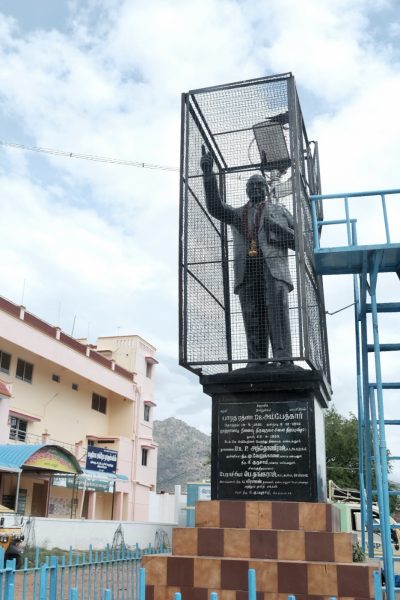
In an attempt to deepen democracy in India, local self-governance system known as Panchayat Raj was implemented through the 1992 73rd and 74th amendments aimed at decentralised planning, increased political participation, and strengthening social justice. However, in many contexts, the Dalits were not only discriminated against but also brutally attacked as they contested local elections. How could one explain such brutal violence? In understanding caste in relation to local politics, the focus continued to be dominated by political scientists’ concern over how electoral politics entrenches caste identity. Again, how attempts to deepen democracy operate upon the feudal economic order of the caste system was not paid due attention. Perhaps the issue was the approach to caste as identity and difference rather than as a system and hierarchy. Studies on caste and electoral politics often push the idea of caste as a mere identity category of mobilisation by competing caste groups, suspending aspects of power, hierarchy, and dominance that define caste as a relationship (for example, Shah 2007). Caste as an encompassing brutal system explains how violence against Dalit elected representatives at local Panchayats is rooted not only in political-economic relations in the village but also in how various caste groups are located within a moral and social order of the village. The caste system defines the social order of the village, within which the agrarian economic relations are located, reproducing Dalits as landless agricultural workers (see Ramaiah 2010). A powerful alternative moral imagination is required to challenge the economic relations in the village. While education and public employment have been instrumental in generating this moral imagination, the phenomenon of Dalits as leaders of the village by being Panchayat presidents is explicit and instantly experienced by the dominant caste groups.
Political power induces a direct confrontation with oppression and inequality, unlike education and employment, which appear to have a gradual impact. Education and employment do not always result in challenging the rural hierarchies in the way political power in the rural could. Micro-confrontation is the key feature of political power at the local level. Therefore, the implementation of local democracy and reservation seats for Scheduled Castes (SC) and Scheduled Tribes (ST) generated a massive rupture in the social order of the village. Preserving the holistic domination of the privileged caste groups and reduction of the Dalits to a neo-bonded labour situation was a major motive for attacking the Dalit Panchayat presidents. In other words, introducing local democracy explicitly threatened the distinctive agrarian economy and caste-based social order.
Dalit Panchayat presidents across Tamil Nadu, but mainly in the southern region of the state, are threatened, bullied, terrorised, attacked, and even killed, restricting them from functioning as the presidents. This is particularly so for the Dalit women panchayat presidents. Richard Axelby (SOAS) and I carried out fieldwork among Dalit Panchayat presidents and anti-caste activists in the southern region of the south Indian state of Tamil Nadu in the summer of 2023 as part of the GRNPP project at SOAS, London. I discuss below the struggle of Velsami, a Dalit ex-Panchayat president, who belongs to the Paraiyar (Adi Dravidar) from Madapatti, a village with 500 Thevar families and 150 Dalit families, in Madurai district (see footnote). Velsami was a daily wage labourer taking care of the agriculture and cattle of a landowning Thevar family in the village. Only three Dalit families owned small pieces of land, which were of inferior quality. While Velsami was not a bonded labourer, the agrarian relations in the village described by Velsami suggest a neo-bonded labour situation where the opportunities to move out of the village were highly constrained by an economic system that did not offer the Dalits an opportunity to engage in any other economic activities within the village. While the Dalits had the freedom to migrate, the dominant caste expected that the Dalits were available for work on demand, restricting their freedom to migrate. This was the situation when Velsami was in his 20s in the early 1990s.
The caste system and its agrarian relations produced a coercive relationship of dependency. The Dalits who achieved economic mobility through education and employment elsewhere were still treated as socially inferior within the village. Intense practices of untouchability and forms of apartheid continue to exist. The Dalits have access only to their community temple and are not allowed to enter the village temple. They are not allowed to sit on the wooden and stone benches at the centre of the village (manthai). Dalits are expected to remove their chappals while walking through the upper caste streets and give away seats on public buses from town to village. The youngsters defy certain practices, for example, on the chappal and the bus seat, but the temple entry and denial of seats on the wood/stone benches remain rigid. Any violation of these practices is responded to with brutal violence, humiliation and ostracization from the village. While the Dalits had their community leaders looking after the affairs in their hamlet, the Dalit leader was not recognised as the village leader. The leader (Ūr Thalaivar) was always an upper-caste man who made decisions through the village council (Ūr Kūttam), which consisted of members of the dominant/intermediary castes. While the introduction of local self-governance facilitated the consolidation of power for the dominant caste groups, the reservation of the position of Panchayat president on a rotation basis was a massive blow to the conventional structures of political power and domination.

Tamil Nadu adopted a three-tier (village, block, and District level) panchayat raj system through the Tamil Nadu Panchayat Acts 1994. The first local body elections were announced in 1996. Madapatti was among the villages where the Panchayat president position was reserved for Dalits. Thevars organised a meeting for Dalits to announce that the reserved position would disturb the peace in the village and warned them not to contest elections. No one filed a nomination then, and the state election commission periodically declared elections, hoping someone would come forward to contest. The Thevar intimidation of Dalits and the election commissions’ periodic declaration of elections continued until 2002 when Makenthiran, a Dalit activist from Madapatti who resides in a neighbouring town, filed nomination to contest. He filed nomination on behalf of Viduthalai Chiruthaigal Katchi (Dalit Panthers movement in Tamil Nadu), who have resisted the dominant caste’s violence in Tamil Nadu (Gorringe 2017) and engineered autonomous electoral participation for Dalits (Collins 2021). Unless someone contests against Makenthiran, he would be declared the president. In realising this, the Thevars, in retaliation, forcefully made Velsami, Makenthiran’s brother, contest against him. The idea was to make Velsami win the president position and resign after three days. Velsami was kept under their custody for three days, ensuring he did not escape from the village. On the fourth day, Velsami was forced to resign from the position and leave the village as a punishment for his younger brother’s act of defying the Thevars in contesting the election. Fearing the Thevar violence, many Dalit families fled to other villages.
Velsami moved to Madurai in search of livelihood, where he worked as a security guard at night at construction sites for four years. He and his wife suffered without a home, moving from one construction site to another, with their elder daughter of five years old and the younger son of three. Although Velsami was coerced to enter politics and became an accidental panchayat president for three days, the events that followed made him interrogate generations of hardship, exploitation, and untouchability in the village. In 2006, the Untouchability Eradication Front associated with the Communist Party contacted him to see if he would be willing to contest the election again. Encouraged by his exposure in Madurai to anti-caste politics, Velsami filed nomination right before the deadline. Since no one else filed nominations, Velsami was declared Panchayat president. The dominant caste threatened him, but he did not budge. By then, the village of Madapatti became popular and came under the radar of media and politics at large. This limelight has helped Velsami to obtain some support from the state and bureaucracy. In a peculiar development, Velsami was offered armed police escort during his five-year presidency term. The dominant caste called him the one who ruined the village (Ūrai Keduthavan) and ensured he remained unemployed once his presidency ended in 2010. His wife and children were called the family of the one who wrecked the village (Ūra Keduthavan Kudumbam) and had to face the wrath of the dominant caste, making it difficult for them to find work in the village. The Thevars project the exploitative and oppressive order of the village as the moral relationship. A silent revolt that Velsami created was seen by the dominant as a rupture of peace in the village, as it generated a crisis for their dominance (Mhaskar 2022). The Thevar families altogether avoided coming to the Panchayat office during his tenure. They have realised now that they cannot stop the elections forever and, therefore, have changed their strategy: to field Dalit candidates who could be retained under the influence of the dominant caste.
The Dalits successfully resisted the upper caste violence in villages where they had a majority in local body elections. Wherever a single caste is not numerically dominant, various backward caste groups unite against Dalits to keep them away from political (and social) power. Wherever they had to cede to local body elections, the dominant castes attempted to nominate a Dalit who was expected to be subservient to their interest, often represented by the Panchayat vice president from the dominant castes. Many Dalit presidents continue to resist the attempt to be dominated while the direct and indirect threats against them have increased. During the fieldwork, we witnessed how the dominant caste carried out surveillance of the Dalit presidents, making it difficult to talk to them in the village. We often had to meet them outside the village without being observed.
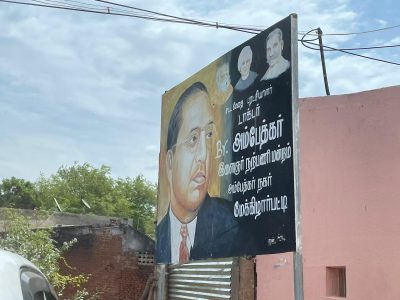
During the fieldwork, I interacted with many Dalit Panchayat presidents who continued to be threatened by the dominant caste groups. Violence against the Dalit Panchayat presidents is very much epitomised through the Madapatti event but also by the brutal murder of Murugesan, a Dalit Panchayat President of Melavalavu, also in Madurai district in 1997. The murder of Murugesan was a warning to all Dalits who wished to contest local body elections. Evidence, an NGO based in Madurai, conducted a survey among the Dalit Panchayat Presidents and came up with a report describing 30 different kinds of discrimination faced by Dalit Panchayat presidents, particularly women, across Tamil Nadu. In many villages, the Dalit presidents reported that they were not allowed to sit on a chair with elected representatives from other communities. The chair not only represents the power and status of a local council president, but it directly breaches caste norms, as sitting on a chair in the presence of a caste Hindu was forbidden. Therefore, the chair for Dalit president demonstrates an idea and possibility of equality nurtured through social democracy that destabilises hierarchy, a central element of the caste system.
Much of the contemporary discourse on Indian democracy concentrates on the increasing authoritarian and populist tendencies of majoritarian nationalism. Such a discourse often leaves out the regional political parties dominated by backward caste groups (included in the category of ‘other backward classes’ or OBC) who are socioeconomically better off than the Dalits. The OBC-dominated political parties are seen as representing the backward caste groups and fighting against Brahmin domination (Witsoe 2011), a process that Christophe Jaffrelot (2003) termed the ‘silent revolution’. While the silent revolution is also about the Dalit’s capture of power in certain contexts, it is mainly about the transfer of power from the Brahmins to the OBCs without much bloodshed and violence. Paradoxically, political assertion of the OBCs goes hand in hand with the violence against Dalits, especially in the villages. While they are middle caste and often project themselves against the caste domination of the upper caste, they also promote themselves as higher caste and caste Hindus of the villages, policing, ensuring, and reproducing caste order. This is a practice of upholding both caste and anti-caste politics by representing modern values as well as traditional norms in reproducing their dominance, as demonstrated for Brahmins by MSS Pandian (2002). In such a context, a Dalit-centric analysis of Indian democracy is imperative to understand the significance of social democracy for political democracy and how that is interlinked with economic democracy. The interlinkage is more salient in local democratic aspirations, as it uncovers all the contradictions of democracy itself in a casteist society.
Footnote: Pseudonyms are used for persons and the village throughout the article. Thevars are dominant caste groups who are classified as Backward Class (BC) by Tamil Nadu state and as Other Backward Class (OBC) by the Indian state. Backward classes refer to a cluster of caste and religious communities who had limited access to socioeconomic mobility historically but are more privileged compared to Dalits.
References:
Collins, M. (2021), Behind the Ballot: Democracy, Chicanery, and Electoral Technique in Modern India. Political and Legal Anthropology Review, 44: 28-42.
Gorringe, H. 2017. Panthers in Parliament: Dalits, Caste, and Political Power in South India. New Delhi: OUP.
Jaffrelot, C. 2003. India’s silent revolution. The rise of the lower castes in North India. London: Hurst.
Mhaskar, S. 2021. Crisis of Dominance: Understanding the Rural–Urban Roots of Maratha Caste Mobilisation for Reservation. Urbanisation, 6(1): 64–81.
Pandian, M. S. S. 2002. One Step Outside Modernity: Caste, Identity Politics and Public Sphere. Economic and Political Weekly, 37 (18): 1735-1741
Ramaiah, A. 2010. Social democracy in Indian villages: The Experience of Dalits in Southern Tamil Nadu’, In Imtiaz Ahmad and Shashi B. Upadhyay (Eds.), Dalit assertion in society, Literature and History. Hyderabad: Orient Blackswan.
Shah, A. M. 2007. Caste in the 21st Century: From System to Elements. Economic and Political Weekly, 42 (44): 109-116
Tudor, M. 2013. The promise of power. The origins of democracy in India and autocracy in Pakistan. Cambridge: Cambridge University Press.
Varshney, A. 1998. India Defies the Odds: Why Democracy Survives. Journal of Democracy, 9 (3): 36-50.
Witsoe, J. 2011. Rethinking Postcolonial Democracy: An Examination of the Politics of Lower-Caste Empowerment in North India. American Anthropologist, 113 (4): 619-631.
Acknowledgement:
This is part of the ERC-funded project ‘A global comparative ethnography of parliaments, politicians, and people: representation, relationships, and ruptures’. ERC grant number 834986. For more about the project see also: https://cordis.europa.eu/project/id/834986.

